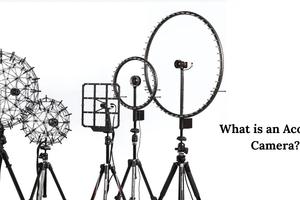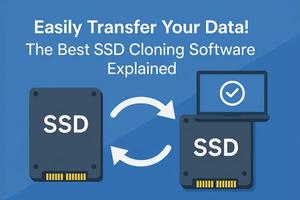Steam Turbine Refurbishment: From Inspection And Fault Analysis to Reconditioning Steps

Key Takeaways
Essential insights to remember
Steam turbine refurbishment can extend equipment life while saving up to 75% compared to new turbine costs
Successful reconditioning requires systematic inspection, fault analysis, and component-specific restoration procedures
Proper refurbishment includes detailed wear assessment, component testing, and quality control measures
Refurbished turbines can deliver reliable performance in various applications including power generation
Introduction 🔧
The Evolution of Turbine Maintenance
Steam turbine refurbishment represents a paradigm shift in industrial maintenance, offering a cost-effective alternative to complete replacement while ensuring optimal performance restoration. This process, also known as turbine reconditioning or rehabilitation, has become increasingly significant as organizations seek to maximize asset longevity.
““"Prevention is better than cure, but refurbishment is better than replacement." - Industrial Maintenance Proverb.
Key Benefits of Steam Turbine Refurbishment ⚡
- Cost Efficiency: 75-80% savings compared to new equipment
- Environmental Impact: Reduces carbon footprint through resource conservation
- Performance Optimization: Restores original specifications
- Extended Lifecycle: Adds 15-20 years to turbine lifespan
Understanding the Value Proposition
In today's industrial landscape, where efficiency meets sustainability, steam turbine refurbishment emerges as a strategic choice. Organizations must weigh various factors:
- 🏭 Operational Requirements
- 💰 Budget Constraints
- ⏱️ Time Considerations
- 🌍 Environmental Impact
Understanding Steam Turbine Failure Mechanisms 🔍
Common Failure Patterns and Their Impact
In the realm of turbine maintenance, understanding failure mechanisms is paramount for effective refurbishment. These patterns often develop through a complex interplay of mechanical, thermal, and chemical factors.
Critical Components Under Stress ⚠️
- Rotor Assembly
- Blade attachments
- Shaft bearings
- Sealing systems
- Stationary Components
- Nozzle assemblies
- Diaphragms
- Casing joints
““"Understanding failure mechanisms is the cornerstone of effective turbine refurbishment."
Performance Monitoring Indicators 📈
- Vibration levels
- Steam path efficiency
- Bearing temperature trends
- Seal leakage rates
This systematic understanding of failure mechanisms enables development of targeted refurbishment strategies, ensuring longer operational life and improved reliability.
Comprehensive Inspection Process 🔎
Advanced Inspection Methodologies
The cornerstone of successful turbine refurbishment lies in a systematic and thorough inspection process. Modern inspection techniques combine traditional methods with cutting-edge technology to ensure no defect goes unnoticed.
Non-Destructive Testing Techniques ⚡
Primary Testing Methods
- Ultrasonic Testing
- Thickness measurement
- Crack detection
- Internal flaw identification
- Magnetic Particle Testing
- Surface crack detection
- Sub-surface defect analysis
- Material integrity assessment
Component-Specific Assessment 🔧
- Rotor Assessment
- Runout measurements
- Balance condition
- Blade attachment integrity
- Casing Inspection
- Joint alignment
- Bolt torque verification
- Surface condition analysis
““"Precision in inspection translates to perfection in performance."
Modern inspection processes incorporate real-time data analysis and digital documentation, ensuring comprehensive evaluation of turbine condition before refurbishment begins.
Refurbishment Planning and Procedures 🛠️
Strategic Approach to Restoration
Every successful turbine refurbishment begins with a meticulously planned strategy. This phase determines the scope, timeline, and resource allocation necessary for optimal results.
Step-by-Step Restoration Process ⚙️
Phase 1: Disassembly and Classification
- Component Removal
- Sequential documentation
- Part labeling
- Storage procedures
- Condition Assessment
- Dimensional checks
- Wear pattern analysis
- Material evaluation
Phase 2: Component Restoration 🔨
““"Precision in restoration equals reliability in operation."
Critical Activities:
- Surface restoration
- Alignment correction
- Clearance adjustment
- Material reinforcement
Phase 3: Assembly and Integration 🔧
- Sequential Assembly
- Torque specifications
- Clearance verification
- Alignment checks
- System Integration
- Connection verification
- Auxiliary system checks
- Instrumentation calibration
This systematic approach ensures each component receives appropriate attention while maintaining overall project efficiency and quality standards.
Major Component Reconditioning 🔄
Strategic Component Restoration
The success of turbine refurbishment hinges on the precise reconditioning of major components. Each element requires specific techniques and expertise for optimal restoration.
Casing and Seals Refurbishment 🏗️
Critical Areas of Focus:
- Casing Joint Surfaces
- Flatness restoration
- Surface finish improvement
- Bolt hole reconditioning
- Sealing Systems
- Clearance optimization
- Material replacement
- Surface treatment
Bearing System Rehabilitation ⚖️
““"Precision in bearing restoration is the foundation of reliable operation."
Process Steps:
Material Enhancement Techniques 🛡️
- Surface hardening
- Protective coating application
- Wear-resistant treatments
Each component's reconditioning process is carefully documented and verified against original specifications to ensure optimal performance restoration.
Testing and Validation ✅
Comprehensive Quality Assurance
Post-refurbishment testing ensures that every restored component meets or exceeds original performance specifications. This critical phase validates the effectiveness of the reconditioning process.
Verification Methods 🔍
Mechanical Testing
- Rotational Tests
- Speed verification
- Bearing performance
- Alignment confirmation
- Load Testing
- Gradual load application
- Temperature monitoring
- Vibration analysis
Documentation Requirements 📋
““"Documentation is the key to traceability and future maintenance planning."
Quality Control Checkpoints ⭐
- Base performance establishment
- Component-specific verification
- System integration validation
- Final performance certification
These comprehensive testing procedures ensure the refurbished turbine meets all operational requirements and safety standards.
Economic Considerations 💰
Financial Analysis of Refurbishment
Understanding the economic implications of turbine refurbishment requires a comprehensive cost-benefit analysis. This evaluation encompasses both immediate expenses and long-term financial benefits.
Return on Investment Calculations 📊
Key Financial Metrics
- Initial Investment
- Equipment costs
- Labor expenses
- Facility requirements
- Operational Benefits
- Efficiency improvements
- Reduced maintenance
- Extended service life
Life Cycle Cost Benefits 💹
““"Investment in quality refurbishment pays dividends through extended service life."
Cost Comparison: New vs Refurbished 🔄
This economic analysis demonstrates the substantial financial advantages of choosing refurbishment over replacement while maintaining operational excellence.
Conclusion: The Future of Turbine Refurbishment 🎯
Strategic Value and Long-term Impact
The comprehensive approach to steam turbine refurbishment represents a pivotal advancement in industrial maintenance strategy. This evolution combines economic efficiency with technical excellence.
Future Outlook 🔮
- Technological Integration
- Advanced diagnostics
- AI-powered monitoring
- Digital twin implementation
- Sustainability Focus
- Reduced material waste
- Energy efficiency optimization
- Environmental compliance
““"The future of industrial sustainability lies in intelligent refurbishment strategies."
This proven approach to turbine refurbishment not only extends equipment life but also contributes to sustainable industrial practices while maintaining peak operational efficiency.





